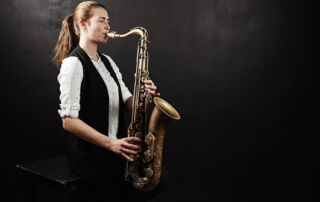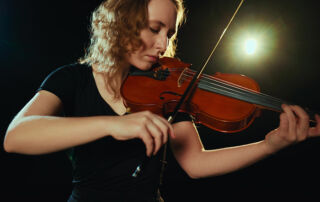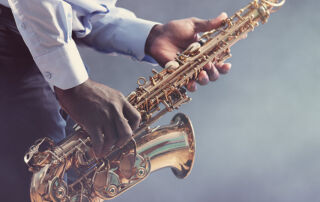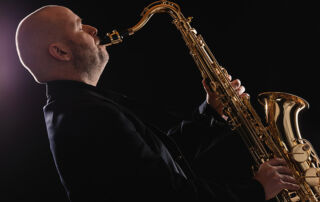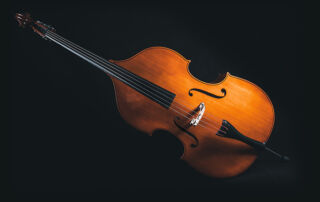But what is it?
The earliest known references to the pizzicato technique can be found in Tobias Hume's collection "the first part of Ayres" (1605) (Souldiers and Hark, Hark), which requires the gambist to play a few notes in pizzicato, as well as in the madrigal "Clorinde et Tancrède", which instructs the musician to put aside his bow and pluck the strings with two fingers.
In Leopold Mozart's treatise "Versuch einer gründlichen violinschule" (1756), the use of the index finger of the right hand is indicated for plucking.
String players (violin, viola, cello, double bass) use a traditional technique to produce sound by passing the bow over the string between the fingerboard (the ebony part where the fingers of the left hand are placed) and the bridge (the wooden part that tensions the strings) called the "arco" technique (bow in Italian).
Using this technique, it is possible to use nuances by playing louder or softer and produce a uniform sound.
But there is another technique that allows the musician to produce a sound on bowed string instruments without using a bow: "pizzicato", a term borrowed from Italian.
It is a typical word in the musical lexicon in its original language, where it is the substantive past participle of the verb "pizzicare", which means to pinch.
Playing pizzicato involves plucking the strings with the fingers of the right hand, which is free of the bow. The left hand continues to play the notes.
The term is abbreviated to "pizz" followed (when bowed) by "arco".
The pizzicato is one of the first techniques you learn when you start playing a bowed string instrument, before learning how to hold the bow.
As there is no longer any support from the bow, the sound stops immediately, suggesting short notes, but it is possible to let this note resonate by means of the vibrato of the left hand if a note is played with pressure, and thus to lengthen its value.
This pizzicato technique is used extensively in jazz by the double bass, which generally plays the entire performance without a bow, allowing a rhythmic and percussive element to be heard as well as a note.
In classical music, it is only partially used, but there are entire pieces dedicated to this technique, as in :
"Pizzicato Polka by Johann Strauss fils
"Playful pizzicato", movement 2 of Benjamin Britten's Simple Symphony
"Plink, Plank, Plunk by Leroy Anderson.
How to produce a Pizz?
Place your right thumb against the fingerboard, preferably towards the end of the fingerboard to get as much resonance as possible, but be careful not to remove the rosin from the strings by playing too close to the bridge.
Remember to use the pad or fat of your finger, otherwise the result will not be very pleasant to listen to. Then pluck the different strings with your index or middle finger if you prefer?
You can vary the intensity of the sound by plucking the string very lightly or a little harder.
Be careful not to pluck too hard, as the string could galvanise on the fingerboard and you could be disappointed with the sound you get.
You can choose to pizzazz with the thumb on the cello to get an even rounder sound. What's more, the thumb allows us to arpeggiate notes, i.e. to play several notes in a row and even to play them at the same time.
This technique is a little more difficult to achieve, but with a little practice, you'll be able to do it without any problems.
How do I switch from arco to pizz?
All you have to do is release your index finger and keep your bow in its usual position.
If you want to switch from arco playing to thumb pizz, grasp your bow in the palm of your right hand, stick out your thumb and return to the initial position to switch back to arco playing.
Other types of pizzicato techniques
- The left-hand pizz was widely used and popularised by Niccolò Paganini.
In this case, a small + is placed above each note.
All you have to do is pluck the string with one of the fingers of your left hand at the fingerboard of the instrument. This technique allows you to quickly introduce pizzas without breaking the bowing action.
- The Bartók pizz
This technique is very similar to the 'slap' used in jazz. It consists of snapping the string by lifting it perpendicular to the fingerboard before letting it fall back violently onto the fingerboard.
Béla Bartók saw this technique practised by peasant musicians, and in particular by the Csángós (an ethnic community from Romania) from Gyimes (a commune in Romania) playing the roach (a Serbian, Romanian and Moldavian folk instrument).
- The pizz glissando or gliss pizz on a note
This involves playing a pizzicato note that is followed directly by a slide either upwards or downwards.
It's perfectly possible to play pizzas as close to the bridge as possible, as indicated by "sul ponticello", from the Italian for "on the bridge", which gives a unique sound.
This technique can be found, for example, in the 3rd movement of Ligeti's second quartet.
Pizzicato on the guitar
You pluck the strings while the palm of your right hand dampens the vibrations all the way to the bridge.
The sound is particularly soft and muffled.
In the 19th century, it was known as "etouffes", which means "smothered" in French. This technique is sometimes referred to as P.M. (palm muting).
The disadvantage of pizzicato playing is that the finger that plucks the string gets a blister at first, but don't worry, the finger will soon become harder, allowing you to play as much pizzicato as you like.

